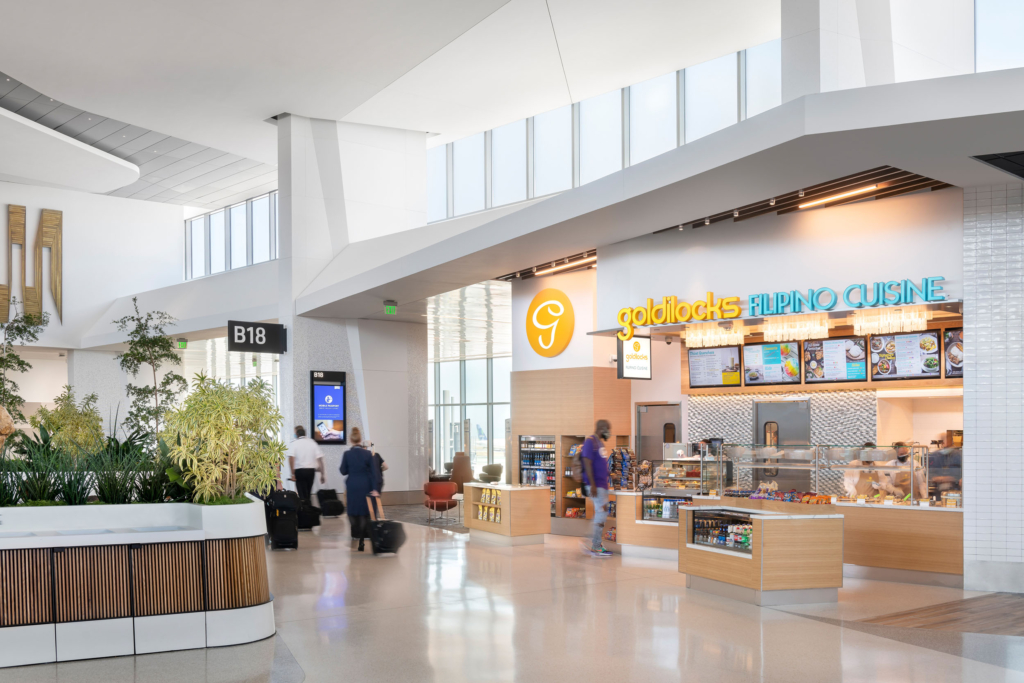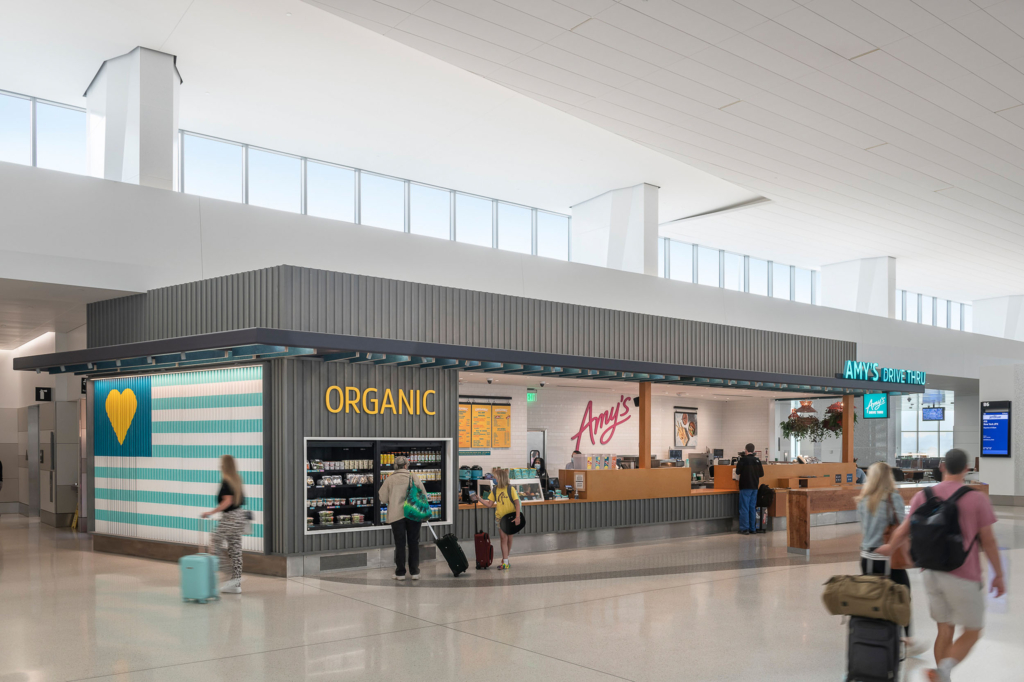The architecture and interior design firm worked on Harvey Milk Terminal 1 locations for pioneering family brands Illy, Goldilocks and Amy’s.
Press Release
William Duff Architects (WDA) adds to its portfolio of airport dining amenities projects at San Francisco International Airport (SFO) with recently completed projects for three pioneering brands.
These projects include the only current US West Coast airport location for Illy, an 87-year old, Trieste, Italy-based coffee company whose founder invented the precursor to the espresso machine; the first-ever United States airport location for Goldilocks, a Philippines-based, global bakery chain founded more than 50 years ago by three Filipino-Chinese women; and the first-ever airport location for Amy’s Drive-Thru, a new dine-in concept from Petaluma, California-based Amy’s Kitchen, an organic, vegetarian and vegan food company.

These projects — located at Harvey Milk Terminal 1, named in honor of the late US politician who became the first openly gay elected official in California, upon his election to the San Francisco Board of Supervisors in 1977 — showcase what WDA Founder William S. Duff, Jr, AIA considers trends in airport dining amenities. He says, “When it comes to the ever-changing needs and expectations our clients’ customers have for their airport dining experience, connection, curation, and convenience are key.”

According to Duff, the trends are similar across the various dining amenities WDA has completed at SFO — from the inline, Terminal 1 locations for Illy’s, Goldilocks, and Amy’s to the recently refurbished British Airways Lounge at SFO, which offers private dining. Duff and his team, including Retail Practice Leader Jonathan Tsurui and Project Manager Chris Telles, have completed over 30 airport retail commissions totaling more than 60,000 square feet across all four terminals, including 11 dining amenities projects.
Retail Practice Leader Tsurui, who has worked almost exclusively at SFO for the past 12 years, breaks down the airport dining amenities trends:
Connection
This relates specifically to how our clients’ inline spaces become more integrated with the terminal concourses, in terms of materials, scale, and aesthetics, as well as, seating options, while creating a brand experience. From a design standpoint, this means approaching the “big move” with restraint; for example, the simple articulation of a black ribbon framing the Illy buildout.
Curation
SFO continues to distinguish itself through a deliberate approach to creating curated dining experiences. Each terminal features a unique mix of offerings that captures the best and most innovative of the San Francisco Bay Area food scene. From a business standpoint, SFO offers brands the potential for exposure to what is in essence, a captive audience that in 2019 numbered more than 57 million passengers, not counting airport staff, airline employees, and consultants.
Convenience
The quick-serve concept plays out differently at an airport location with few repeat customers, versus a street-front with a regular clientele. For example, Goldilocks offers a pictorial menu with “best hits,” modified for a broader palate. This approach helps establish an instant familiarity with passengers while enabling the company to streamline its operations within a smaller footprint, maintain product quality, and offer a consistent brand experience.
“These trends anticipate our clients’ customers’ expectations for dynamic airport experiences,” notes WDA project manager Chris Telles. He adds, “On the other hand, the airport infrastructure itself represents a significant, long-term investment. Since our team at WDA understands the complexity of the airport as a building typology, and the challenges of building out amenities within that context, we can navigate through SFO’s unique Design Review Committee process to get these projects successfully delivered to our clients.”
Duff thinks that WDA’s versatility across project types, an ability to work under such controlled site conditions as presented by an airport, and a deep understanding of how architecture and design play into their business, benefits clients. As he puts it, “We help brands succeed at SFO.”
